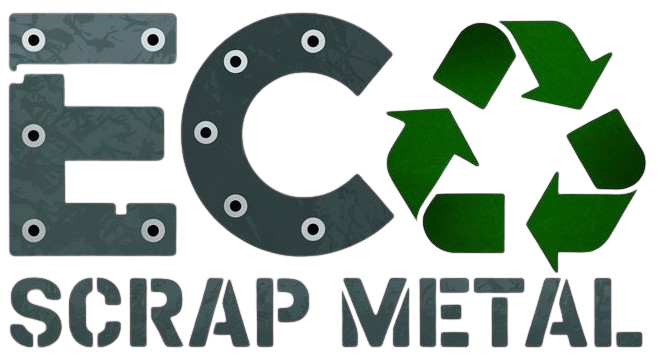Understanding Grades of Copper Scrap: A Comprehensive Guide
Copper is one of the most valuable and widely recycled metals in the world. It plays a vital role in electrical wiring, plumbing, electronics, and renewable energy systems. With its high conductivity and resistance to corrosion, copper remains in constant demand — and that includes recycled copper.
But not all copper scrap is created equal. If you’re in the business of recycling, dealing with scrap, or simply want to understand how to get the best price for your copper materials, understanding the different grades of copper scrap is essential.
This blog post breaks down the various copper scrap grades, how they are classified, and what factors influence their value.
Why Copper Scrap is Graded
Copper scrap is graded based on its purity, condition, and the form it’s in. These grades help scrapyards, recyclers, and end-users determine:
- How much the scrap is worth
- How easily it can be reused or refined
- What the material can be recycled into
Grading ensures a fair marketplace and helps maintain consistent quality in copper recycling.
Main Grades of Copper Scrap
Copper scrap is generally divided into three broad categories: Bare Bright Copper, #1 Copper, and #2 Copper. Beyond that, there are several subcategories and mixed grades. Let’s take a deeper look at each.
1. Bare Bright Copper (Grade A)
Also known as: Bright & Shiny Copper, Millberry
Purity: 99.9% copper
Description:
Bare bright copper is the highest grade of copper scrap. It consists of clean, uncoated, unalloyed, and untinned copper wire that is at least 16 gauge in thickness. It should be shiny, free of insulation, paint, or other contaminants.
Common Sources:
- Electrical wiring (household and commercial)
- Power cables (after insulation is removed)
- Communication cables
Value:
Highest of all copper grades due to purity and minimal processing requirements.
2. #1 Copper Scrap
Purity: 99% or higher
Description:
#1 Copper includes clean, unalloyed copper solids and tubing. It must be free of any coatings (such as solder, paint, or enamel) and should not have any attachments like brass fittings.
Common Sources:
- Copper pipes and tubing (without fittings or solder)
- Bus bars
- Clippings and punchings
Value:
Second highest value. Great for recycling but needs more preparation than bare bright.
3. #2 Copper Scrap
Purity: ~94–96%
Description:
#2 Copper scrap includes copper materials with some corrosion, coatings, solder, or attachments. This grade may also include thinner-gauge copper wires that are not bright and shiny or have light insulation residue.
Common Sources:
- Painted or soldered copper tubing
- Burnt wire (after insulation is burned off)
- Mixed copper scrap
Value:
Less valuable than #1 copper, but still in demand.
Lower Grades and Mixed Copper Scrap
Beyond the top three, there are other copper-containing materials that fall into lower or mixed grades.
4. #3 Copper or Light Copper
Includes thinner sheets, roof flashing, gutters, and some painted or tarred copper products. Lower purity and more difficult to process.
5. Insulated Copper Wire (ICW)
Subcategories include:
- High-grade ICW: 85% or more copper content
- Mid-grade ICW: 50–70% copper content
- Low-grade ICW: 30–50% or less, includes heavily insulated wire
ICW requires stripping or shredding to recover the copper, so the level of insulation directly impacts its value.
6. Copper Radiators
From HVAC units or cars. Often mixed with aluminum or contain soldered joints, which lowers their grade. May be sold as copper/aluminum radiators.
Factors That Affect Scrap Copper Grading
Even within the same grade, the final value and classification of copper scrap can be influenced by several key factors:
- Purity: The higher the copper content, the better the grade and price.
- Cleanliness: Scrap must be free of insulation, solder, paint, oil, or corrosion to meet higher-grade standards.
- Form: Wire, tubing, and solids may command different prices based on ease of processing.
- Thickness: Wire under 16 gauge won’t qualify as bare bright, even if it looks shiny.
- Market Conditions: Copper prices fluctuate based on global demand, energy costs, and availability. Always check the current price index before selling.
Tips for Sorting and Maximising Copper Scrap Value
- Separate Your Scrap: Always sort your copper scrap by grade before selling it to a scrap metal dealer. Mixing grades will bring down the overall value.
- Strip Insulated Wire: Invest in a wire stripper for thicker gauge wires to convert insulated copper to bare bright.
- Clean the Metal: Remove solder, fittings, and contaminants from pipes and wires.
- Avoid Burning Wire: Burning off insulation is illegal in many areas and lowers the value of copper due to soot and oxidation.
- Stay Updated on Prices: Use online resources or apps to track copper prices in real-time.
Conclusion
Understanding copper scrap grades is essential whether you’re a seasoned recycler, a with leftover materials, or a hobbyist trying to turn old wires into cash. The cleaner and purer your copper scrap, the more money you can earn.
By learning to identify and properly sort copper scrap, you not only maximise your profits but also contribute to an efficient and environmentally responsible recycling process.
Whether you’re dealing with bare bright copper or insulated wires, knowing the grades puts you in a stronger position in the scrap metal market.
Whether you’re a contractor, electrician, or just cleaning out old materials — if you’ve got copper scrap in Sydney, we want to hear from you! We offer top prices, fast service, and easy drop-off or pickup options.

